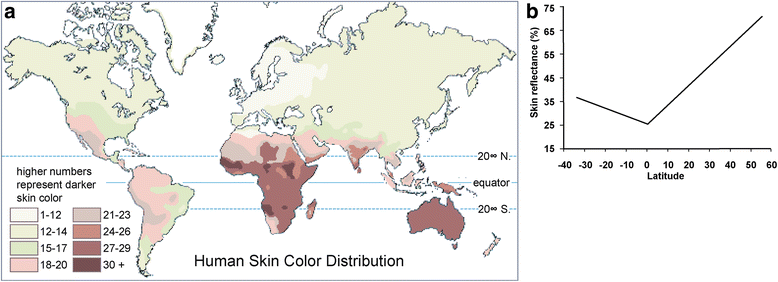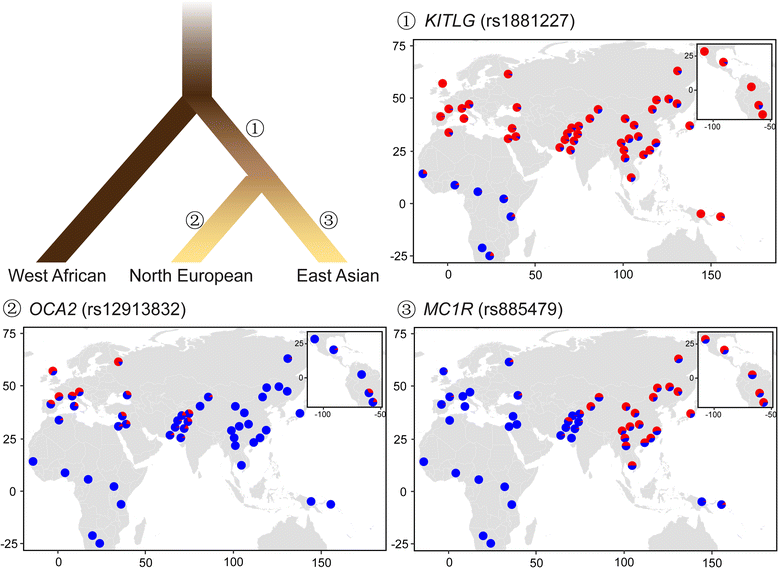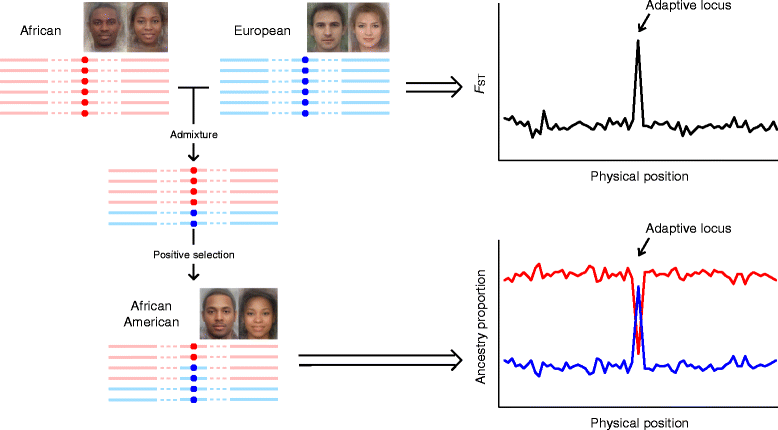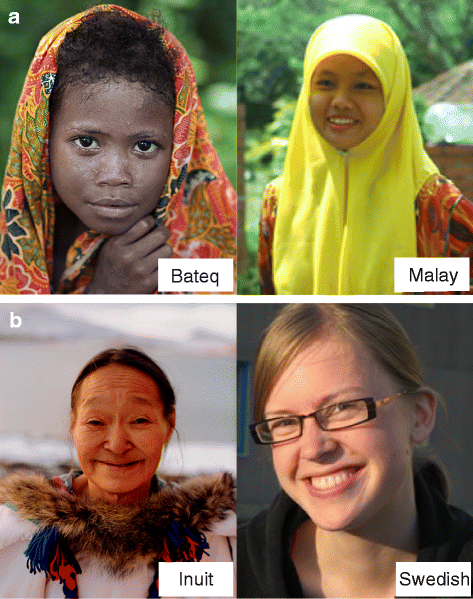Adaptation of human skin color in various populations
- PMID: 28701907
- PMCID: PMC5502412
- DOI: 10.1186/s41065-017-0036-2
Adaptation of human skin color in various populations
Abstract
Background: Skin color is a well-recognized adaptive trait and has been studied extensively in humans. Understanding the genetic basis of adaptation of skin color in various populations has many implications in human evolution and medicine.
Discussion: Impressive progress has been made recently to identify genes associated with skin color variation in a wide range of geographical and temporal populations. In this review, we discuss what is currently known about the genetics of skin color variation. We enumerated several cases of skin color adaptation in global modern humans and archaic hominins, and illustrated why, when, and how skin color adaptation occurred in different populations. Finally, we provided a summary of the candidate loci associated with pigmentation, which could be a valuable reference for further evolutionary and medical studies.
Conclusion: Previous studies generally indicated a complex genetic mechanism underlying the skin color variation, expanding our understanding of the role of population demographic history and natural selection in shaping genetic and phenotypic diversity in humans. Future work is needed to dissect the genetic architecture of skin color adaptation in numerous ethnic minority groups around the world, which remains relatively obscure compared with that of major continental groups, and to unravel the exact genetic basis of skin color adaptation.
Keywords: Archaic hominin; Genetic adaptation; Modern humans; Natural selection; Skin color.
Figures




Similar articles
-
Evolutionary genetics of skin pigmentation in African populations.Hum Mol Genet. 2021 Apr 26;30(R1):R88-R97. doi: 10.1093/hmg/ddab007. Hum Mol Genet. 2021. PMID: 33438000 Free PMC article. Review.
-
The molecular signature of selection underlying human adaptations.Am J Phys Anthropol. 2006;Suppl 43:89-130. doi: 10.1002/ajpa.20518. Am J Phys Anthropol. 2006. PMID: 17103426 Review.
-
The Evolutionary History of Human Skin Pigmentation.J Mol Evol. 2020 Jan;88(1):77-87. doi: 10.1007/s00239-019-09902-7. Epub 2019 Jul 30. J Mol Evol. 2020. PMID: 31363820 Review.
-
Population diversity and adaptive evolution in keratinization genes: impact of environment in shaping skin phenotypes.Mol Biol Evol. 2015 Mar;32(3):555-73. doi: 10.1093/molbev/msu342. Epub 2014 Dec 21. Mol Biol Evol. 2015. PMID: 25534032
-
Human pigmentation variation: evolution, genetic basis, and implications for public health.Am J Phys Anthropol. 2007;Suppl 45:85-105. doi: 10.1002/ajpa.20727. Am J Phys Anthropol. 2007. PMID: 18046745 Review.
Cited by
-
Nutrigenomics of Vitamin D.Nutrients. 2019 Mar 21;11(3):676. doi: 10.3390/nu11030676. Nutrients. 2019. PMID: 30901909 Free PMC article. Review.
-
Evolutionary genetics of skin pigmentation in African populations.Hum Mol Genet. 2021 Apr 26;30(R1):R88-R97. doi: 10.1093/hmg/ddab007. Hum Mol Genet. 2021. PMID: 33438000 Free PMC article. Review.
-
Assessing the Association Between Animal Color and Behavior: A Meta-Analysis of Experimental Studies.Ecol Evol. 2024 Dec 4;14(12):e70655. doi: 10.1002/ece3.70655. eCollection 2024 Dec. Ecol Evol. 2024. PMID: 39640225 Free PMC article.
-
Effects of facial skin pigmentation on social judgments in a Mexican population.PLoS One. 2023 Nov 30;18(11):e0279858. doi: 10.1371/journal.pone.0279858. eCollection 2023. PLoS One. 2023. PMID: 38032952 Free PMC article.
-
Postadmixture Selection on Chileans Targets Haplotype Involved in Pigmentation, Thermogenesis and Immune Defense against Pathogens.Genome Biol Evol. 2020 Aug 1;12(8):1459-1470. doi: 10.1093/gbe/evaa136. Genome Biol Evol. 2020. PMID: 32614437 Free PMC article.
References
Publication types
MeSH terms
LinkOut - more resources
Full Text Sources
Other Literature Sources

